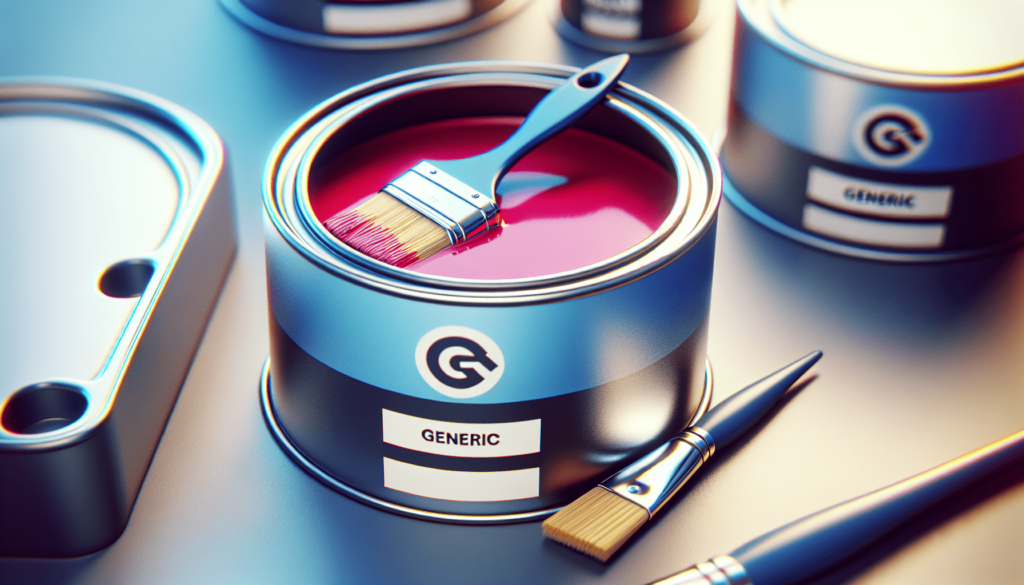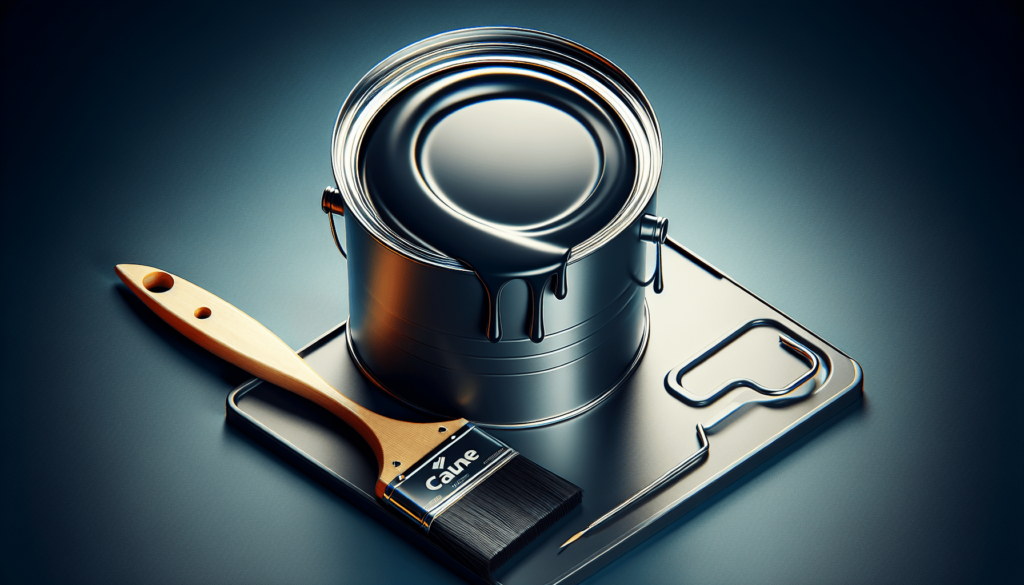In your search for high-quality paints, a common query arises: “Is Glidden Paint oil-based?” This article provides a definitive answer to this pertinent question, exploring the composition and characteristics of Glidden Paint products. It delves into the specifics of both oil-based and water-based formulations offered by the brand, helping you make an informed decision for your painting projects. By the end of this concise yet detailed examination, you will have a clear understanding of whether Glidden Paint includes oil-based options and how they compare to their water-based counterparts. Have you ever found yourself in a hardware store or browsing online, looking at an overwhelming selection of paints, and found yourself asking, “Is Glidden Paint Oil Based?” It’s a common question, and getting the answer right is crucial for your project’s success. Whether you are a homeowner planning a small do-it-yourself project or a contractor working on a larger scale, understanding the properties of the paint you are using is essential.

Understanding Glidden Paint
Glidden Paint, a well-established brand in the paint industry, has been providing high-quality paints for both residential and commercial use for many years. Known for its affordability and durability, Glidden offers a wide range of paints suited to various applications. Before delving into whether Glidden Paint is oil-based or not, it is important to grasp the basics of what oil-based paint entails and how it compares to other types of paint, particularly latex-based paints.
What is Oil-Based Paint?
Oil-based paints, also known as alkyd paints, are traditional paints that use natural oils or synthetic alkyds as their base. They have been widely used throughout history due to their durability, rich finish, and ability to adhere to various surfaces. However, they also come with several downsides such as longer drying times and the need for strong solvents like mineral spirits or turpentine for cleanup.
Advantages of Oil-Based Paint
When you opt for oil-based paint, you benefit from several key advantages:
- Durability: These paints form a hard, durable surface that can withstand heavy wear and tear.
- Smooth Finish: Oil-based paints dry smoothly and evenly, producing a glossy and professional finish.
- Adhesion: They adhere well to a broad range of surfaces, making them versatile in their applications.
Disadvantages of Oil-Based Paint
However, oil-based paints also present some challenges:
- Long Drying Times: They take longer to dry, which can delay project completion.
- Odor: These paints emit strong fumes and require good ventilation during application.
- Cleanup: Cleaning up requires mineral spirits or turpentine instead of just soap and water.
Is Glidden Paint Oil-Based?
Now, let’s directly address the question: Is Glidden Paint Oil-Based? The answer is both yes and no. Glidden paints come in both oil-based and water-based (latex) varieties. Your choice between the two depends on the specific requirements of your application, as each type offers distinct benefits and limitations.
Oil-Based Glidden Paints
Glidden does offer oil-based paints, which are commonly used for exterior surfaces or high-traffic areas where durability is paramount. These paints are known for their robust, long-lasting finish and their ability to withstand harsh environmental conditions. Some common applications include:
- Trim and Cabinetry: Areas that require a hard-wearing finish.
- Doors and Moldings: Surfaces that endure frequent contact.
- Metal and Wood Surfaces: Materials that benefit from oil-based paint’s strong adherence and moisture resistance.
Water-Based (Latex) Glidden Paints
Glidden also offers a comprehensive range of water-based or latex paints. These are widely preferred for most interior and many exterior applications due to their ease of use, quick drying times, and the convenience of soap-and-water cleanup. Some specific examples include:
- Walls and Ceilings: Ideal for living spaces due to low odor and easy application.
- Bathrooms and Kitchens: Paints with added mildew resistance.
- Furniture and Accessories: Easier for DIY projects where quick drying and cleanup are beneficial.
Comparison of Oil-Based and Water-Based Glidden Paints
To help you determine the best choice for your project, let’s compare oil-based and water-based Glidden paints more closely.
| Feature | Oil-Based Glidden Paints | Water-Based Glidden Paints |
|---|---|---|
| Durability | High | Moderate to High |
| Drying Time | Longer (up to 24 hours) | Short (1-2 hours touch dry) |
| Finish | Smooth, glossy, hard | Available in various finishes, less glossy |
| Ease of Application | Requires more skill and patience | Easier to apply |
| Cleanup | Requires solvents (mineral spirits) | Soap and water |
| Odor | Strong, requires ventilation | Low odor |
| Environment | More VOCs (Volatile Organic Compounds) | Lower VOCs, more environmentally friendly |
Applications and Suitability
Choosing between oil-based and water-based Glidden paints depends on the specific needs of your project. Here are some scenarios where one might be more suitable than the other.
Ideal Situations for Oil-Based Glidden Paint
Use oil-based Glidden paint when:
- High Traffic Areas: Need for a durable, hard-wearing finish.
- Weather Resistance: Outdoor surfaces exposed to harsh weather.
- Smooth Finish: Areas requiring a sleek, glossy surface, such as cabinets or doors.
- Adhesion: Surfaces that are difficult to paint, where superior adhesion is needed.
Ideal Situations for Water-Based Glidden Paint
Opt for water-based Glidden paint when:
- Large Interior Spaces: Quick drying time is essential to minimize disruption.
- User Convenience: Easy application and cleanup are important.
- Low Odor Requirements: Environments where strong fumes are undesirable, such as homes with children or pets.
- Environmental Considerations: Low-VOC formulations are preferred for better indoor air quality.

How to Choose the Right Glidden Paint
Selecting the right paint involves considering several factors such as the type of surface, environmental conditions, desired finish, and personal preferences. Here are some guidelines to help you make an informed choice.
Evaluate the Surface and Environment
Different surfaces and environments require different types of paint. For example:
- Wood and Metal: Oil-based paints are often a better choice due to their strong adhesion and durability.
- Drywall and Plaster: Water-based paints work well on these common interior surfaces.
- High Humidity Areas: Special formulations of water-based paint with mildew inhibitors are ideal for bathrooms and kitchens.
Determine the Desired Finish
The desired finish plays a crucial role in determining the type of paint:
- Glossy and Hard Finish: Oil-based paints are better for achieving a high-gloss, durable finish.
- Matte and Easy Maintenance: Water-based paints are available in various finishes including matte, satin, and eggshell, providing more options for different looks.
Consider Application and Maintenance
Ease of application and ongoing maintenance can also influence your decision:
- Professional vs. DIY: Professionals may opt for oil-based paints for specific results, whereas DIY enthusiasts may prefer the convenience of water-based paints.
- Maintenance Requirements: Consider future maintenance; oil-based paints may require reapplication of a solvent-type paint, while water-based paints offer easier touch-ups and cleaning.
Environmental and Health Considerations
When choosing paint, it’s important to think about the environmental and health impacts of your decision. Modern regulations and consumer preferences have driven many manufacturers, including Glidden, to produce paints that are less harmful to health and the environment.
Volatile Organic Compounds (VOCs)
VOCs are chemicals found in many paints that can evaporate and contribute to indoor air pollution. Water-based paints usually have lower VOC levels, making them a healthier choice for indoor applications.
Disposal and Cleanup
Cleanup of water-based paints is simpler and more environmentally friendly, as it involves rinsing brushes and rollers with water rather than hazardous solvents. Proper disposal of leftover paint is easier as well, reducing potential environmental contamination.
Regulatory Compliance
Make sure to check and comply with local regulations regarding VOC emissions and paint disposal. Glidden offers low- and zero-VOC options in their water-based paint line, and these can be a good choice if you are conscious of environmental regulations and indoor air quality.
Best Practices for Using Glidden Paint
No matter which type of Glidden paint you choose, following best practices for preparation, application, and cleanup will help ensure a successful outcome.
Preparation
Proper preparation is crucial for achieving the best results with any paint.
- Surface Cleaning: Clean the surface thoroughly to remove dirt, grease, and imperfections.
- Sanding: Lightly sand the surface to ensure better paint adhesion.
- Priming: Apply a suitable primer based on the base paint type (oil or water).
Application
Effective application techniques can significantly impact the final look of your paint job.
- Tools: Use appropriate brushes or rollers designed for oil-based or water-based paints.
- Techniques: Follow manufacturer instructions for application, including drying times between coats.
- Ventilation: Ensure proper ventilation, especially when using oil-based paints to avoid inhaling harmful fumes.
Cleanup
Proper cleanup ensures your tools and environment remain in good condition.
- Water-Based Paint: Rinse brushes and rollers with soap and water immediately after use.
- Oil-Based Paint: Clean tools with mineral spirits or turpentine, and dispose of used solvents safely.
- Storage: Seal paint cans tightly and store them in a cool, dry place for future use or touch-ups.
Conclusion: Making an Informed Choice
So, is Glidden Paint oil-based? The answer depends on the specific product you choose from their extensive range. Glidden offers both oil-based and water-based options, each with its own set of advantages and applications. By carefully considering your project’s requirements and following best practices for application and maintenance, you can ensure a successful painting experience.
Understanding the characteristics of oil-based and water-based paints, along with factors like durability, finish, ease of application, environmental impact, and health considerations, will guide you in making the best choice for your needs. Whether it’s the enduring finish of an oil-based paint or the quick convenience of a water-based option, Glidden has a solution that will meet your expectations and ensure your project’s lasting success.



